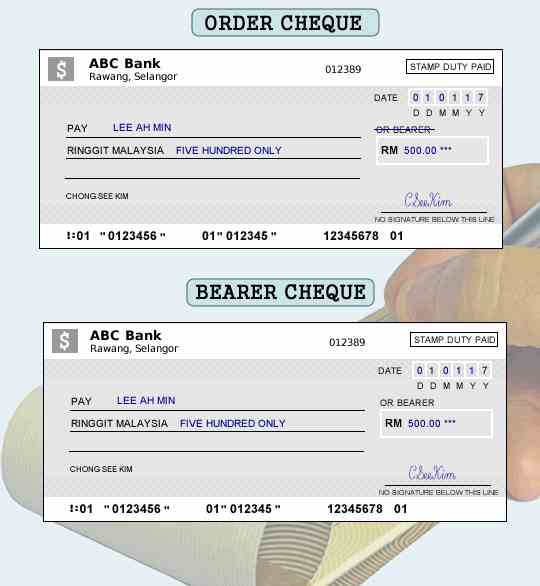Topics in Business Studies
What is an Office? Qualities of a good office layout Small office explained with its characteristics Large office: Characteristics of large office Advantages and disadvantages of small office Advantages and disadvantages of large office Advantages and Disadvantages of Corporations Advantages and Disadvantages of Limited Liability Company Advantages and Disadvantages of Partnership Credit card and Debit card explained with their similarities and differences Business Structure: What is a business structure? Advantages and Disadvantages of Franchise What is a franchise? Types of franchise Corporation explained with its types What is Limited Liability Company? What is Partnership Business? Types of Partnership What is business studies? Concept of business Elements of Management What is Management? Importance of Management Advantages and Disadvantages of Air Transport Advantages and Disadvantages of Rail TransportAcademic Questions in Business Studies
A one-man business is termed _____.
A. Proprietorship
B. Sole Proprietorship
C. Individual Entrepreneurship
D. Sole Trader
E. All of the Above
F. None of the Above
Which of the following is not a function of the wholesaler?
A. They distribute goods
B. They store goods
C. Specialization of goods
D. They bring about price variability in goods
E. They act as shock absorbers during the movement of goods
F. Packaging of goods
A person employed by an organization to carry out the everyday duties of a typical office, and at the same time perform a couple of other functions for their company which may vary from one company to another, is termed a _____.
A. Secretary
B. Personal Assistant (P.A)
C. Secretary General
D. Clerical Staff
E. Supervisor
F. Bookkeeper

The above image best describes the _____.
A. Ledger system
B. Journal system
C. Double entry system
D. Balance sheet system
E. Principles of accounting system
F. Balanced accounting system
An accounting system focused primarily on a balanced debit and credit side is termed _____.
A. Ledger system
B. Journal system
C. Double entry system
D. Balance sheet system
E. Principle of accounting system
F. Balanced accounting system
With regards to money, which of the following statement is incorrect?
A. Money is crucial for the survival of every human being
B. Money is completely advantageous
C. Money is defined as anything that is generally accepted as a medium of exchange
D. Monopoly is said to exist when money and wealth exists in the hands of a few
E. Excess money in an economy can lead to inflation
F. When a person receives money that isn't commensurate with the job he or she had done, then that's underemployment
Which of the following statement is wrong with regards to business?
A. Business involves the exchange of something for another thing or money
B. Business is an economic activity
C. In business, profit goes beyond money
D. Businesses do not have social responsibilities to their customers
E. The exchange of services is an aspect of business
F. Businesses can be affected by government policies
Consumer _____ are the laws and methods put in place by various agencies so that consumers can enjoy maximum satisfaction on the goods they buy and services rendered to them.
An understanding on the terms 'drawer, drawee and payee' are required to better comprehend our explanations on the types of cheque.
The types of cheque include:
Open Cheque
Crossed Cheque
Bearer Cheque
Order Cheque
Stale Cheque
Anti-Dated Cheque
Post-Dated Cheque
Cash Cheque
You can read on the characteristics of cheques here.
A cheque is considered to be open when it can be cashed by the payee over the counter. This implies that the payee receives the money stipulated on the cheque as soon as the cheque is validated by the drawer or financial institution.
An open cheque (also called an uncrossed cheque) can be cashed in two ways. These are via:
A. Bearer Cheque: A bearer cheque is a cheque payable to the bearer. In this instance, the bearer refers to anyone whom the cheque is addressed to: that is, by his or her specific names.
If a bearer cheque is lost, the payee will not be able to cash the cheque. In short, the money is as good (or as bad) as lost.
You can read on bank notes and coins here.
The word 'bearer' in a bearer cheque will not be cancelled out. This means that the cheque will have words like:
Pay 'bearer' or Pay 'the specific name on the cheque'. For instance, Pay 'Alfred Ajibola'. (Please see the image below)
In simple terms, the bearer cheque is an open cheque, thus it can be payed to the payee over the counter. Meanwhile, understand that an individual with a current account or savings account can request for a bearer cheque from his or her bank.
Normally, a proof of identity is not required to cash a bearer cheque. However, in a situation where a huge amount of money is to be cashed, a form of identification may be required.
Importantly, a cashier will need to sign on the back of the bearer cheque to acknowledge that money had been received from the bank via the cheque.
Please read on the advantages and disadvantages of cheques here.
Below is an image of a bearer cheque and an order cheque.

B. Order Cheque: An order cheque is a cheque that has the word 'bearer' cancelled on it. The cancellation should look like this: 'or bearer'. It is this very act of cancellation that makes a cheque an order cheque.
Please read on credit and debit cards as methods of payments here.
Under normal circumstances, an order cheque is payed into the payee's bank account. This means that the payee does not receive cash and such process can prove useful for security reasons.
If cash (or money) is paid when an order cheque is tendered, then such a cheque is called a cash cheque. In this regard, the order cheque must read: 'pay cash ...'
Please read on the disadvantages of money here.
In order to transfer money through an order cheque into the payee's account, a form of valid identification must be issued by the payee and ratified (or approved) by the bank's cashier. In addition to this, the bank will also require the signature of the payee on the back of the cheque.
You can read on the Nigerian national symbols here.
Worthy of note is the fact that an order cheque may be transferred into another person's account (called the transferor). To this end, the transferor must tender a signature in order to initiate the process.
An order check made to the bank by another person (not the payee) may still be honoured by the bank.
A crossed cheque is defined as a cheque that is crossed via two parallel lines from top through bottom, or left to right. This cheque may also be crossed at its top-right, top-left, bottom-right, bottom-left or even at the center region of the cheque.
The significance of the two parallel lines in a cheque is to signify that such cheque is a crossed; and that money should not be paid directly to the payee, rather it should transferred into the payee's account. Interestingly, this is a good thing because such account can be tracked and the money recovered in a subsequent case of fraud.
Please read on consumer right and protection here.
The image below shows a crossed cheque:

A crossed cheque provides more security when compared to an open cheque.
As the name (post-dated) implies, it simple means the cheque carries a future date and as such can only be honoured by the bank after the specified date.
As an instance, suppose the cheque bears 1st January, 2020, and today's date is 20th December, 2019; it will imply that the cheque will only be honoured by the bank on or after the 1st of January, 2020.
At the time a post-dated cheque was issued (by the drawer), it will have a future date written on it. The cheque can only be cashed after this date.
An anti-dated cheque is one that carries an earlier date and can only be cashed by the payee after the date.
As an instance, suppose today is 20th December, 2019 and the cheque is dated 10th, December, 2019; then it's an anti-dated cheque. Such a cheque will be honoured by the bank.
You can read on the scope and importance of business studies here.
When a cheque remains with the payee for a long time, and as a result cannot be honoured by the bank; then such cheque is termed a stale cheque.
Think of a state cheque as one presented by the payee to the bank for payment, but was dishonoured because it's presented after a delayed period.
The delay period in a stale cheque could be three months, six months or even more (depending on the drawee) after it was issued to the payee by the drawer.
In summary, an stale cheque bears a date in the past that cannot be honoured by the bank.
Kindly share this article via the links below:

Please click here to contact Alfred if you require any of the following services:
If you need a standard website at an affordable price.
Online training on the academic subjects: biology, chemistry and basic science.
If you require an advanced smart school management system (web application) for your school.
Click here to read on Len Academy Smart School Software.
Please click here to follow Len Academy on Google News.
Please Register here or Login here to contribute to this topic by commenting in the box below.
Amazing facts in Business Studies

According to the Global Bicycle Index, Utrecht in Netherlands is the most bike-friendly city in the world
The world's 100 richest people earned enough money in 2012 to end global poverty four times over
Notable points in Business Studies
Consumer protection refers to the ways or methods through which consumers enjoy maximum satisfaction from the goods they buy and services rendered to them.
The agencies of consumer protection assists in protecting the consumer rights. These agencies may also be referred to as the organs of consumer protection. Basically, we have three of them, they are:
Government Agencies
Independent Agencies
Legislation
One of the responsibilities of the government of every nation is to set up agencies or organizations that will protect the interest of the consumers and invariably, the people.
Below are some of the government agencies of consumer protection:
Please read on the government agencies of consumer protection here